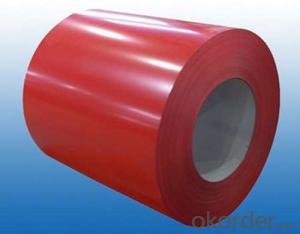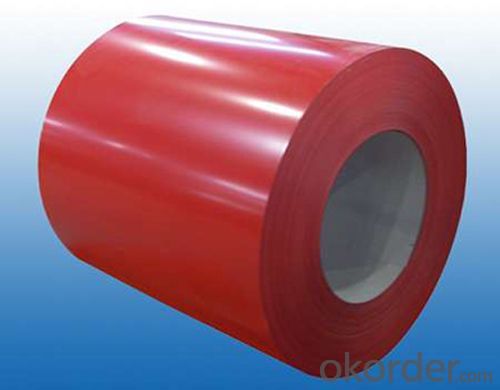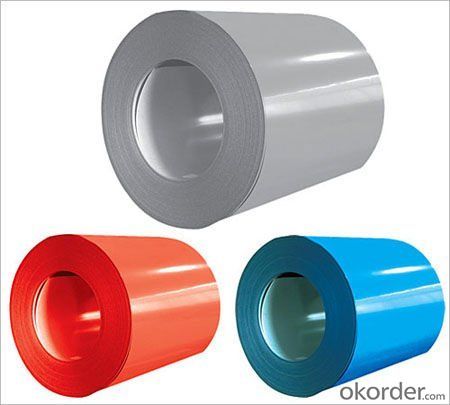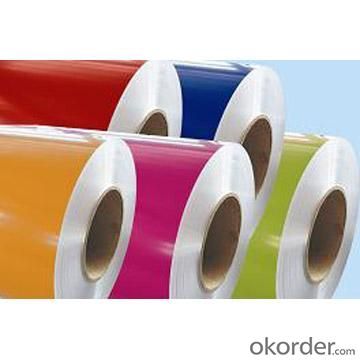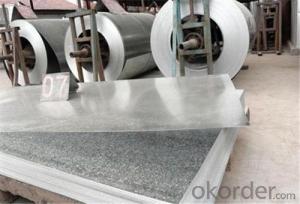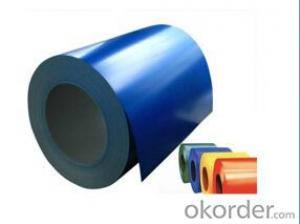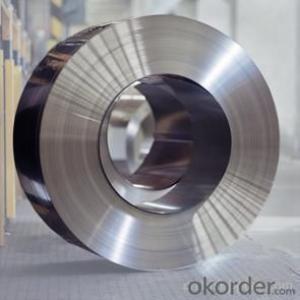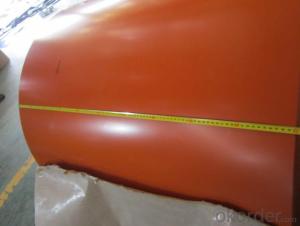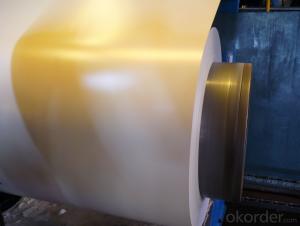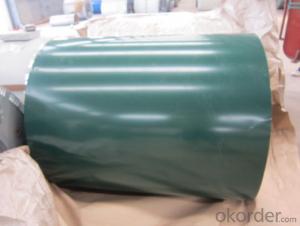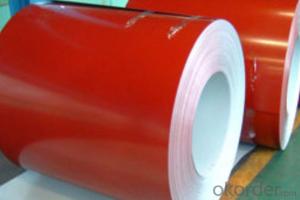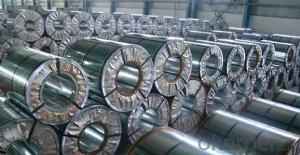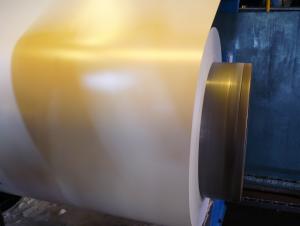Prepainted Galvanized steel Coil of Good Quality
- Loading Port:
- China main port
- Payment Terms:
- TT OR LC
- Min Order Qty:
- 25 m.t.
- Supply Capability:
- 1000 m.t./month
OKorder Service Pledge
OKorder Financial Service
You Might Also Like
Specification
1.Structure of Prepainted Galvanized steel Coil
With Gi as base metal, after pretreatmet (degrease and chemical treatment) and liquid dope with several Layers of color, then after firing and cooling, finally the plate steel is called pre-painted galvanized steel ( PPGI) .
2.Main Features of Pre-painted Galvanized steel Coil
• Smooth and flat surface
• High strength
• Good formability
• Workability, durability
• Excellent heat resistance performance
• Good visual effect
• Excellent process capability
3.Pre-painted Galvanized steel Coil Images
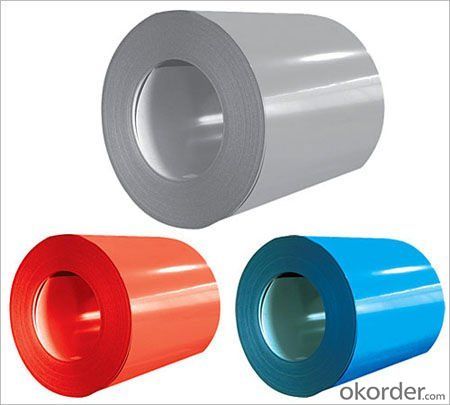
4. Pre-painted Galvanized steel Coil Specification
Standard: ASTM, GB,JIS,JIS G3302 ASTM 755 EN10169
Width: 1250,600-1250mm
Thickness: 0.13mm~3.0mm
Grade: DX51D CGCC CS
Coil weight:3-7MT
Coil ID:508/610mm
5.FAQ of Prepainted Galvanized steel Coi
We have organized several common questions for our clients,may help you sincerely:
1.How do you control your quality
We have established the international advanced quality management system,every link from raw material to final product we have strict quality test;We resolutely put an end to unqualified products flowing into the market. At the same time, we will provide necessary follow-up service assurance.
2. what is your moq
Normally our moq is 25per size ,but it is up to different size
3.how long we will receive the goods ?
After receiving your deposit or workable lc ,our normal shipment date is 15-20days,and it takes around 28 days to reach your port of destination. But is up to different destination
4.How do you control your quality
We have established the international advanced quality management system,every link from raw material to final product we have strict quality test;We resolutely put an end to unqualified products flowing into the market. At the same time, we will provide necessary follow-up service assurance.
- Q: Is condensation on steel caused from water being pulled out or is the condensation formed from the air around the steel object?
- Steel contains no water; any water that you see is condensed out of the air.
- Q: I'm a Hobbyist and want to Build my own axial-flow jet engine,can I use steel as the Turbine blades instead of Titanium which I can't get easily?? What about the other parts I can use for...?!
- Yes you can use steel but you will want to use super alloys like hastaloy and inconel. These withstand the heat in the combustion areas. These are the actual materials used in these stages. If you only want your engine to have a service life of a few hours a conventional hot work steel like H-13 will probably be OK Blades are investment cast in foundries that carefully control the rate of cooling to create a very uniform grain structure
- Q: I heard about a new bike the specialized allez steel. Has anyone heard anything about it. it will have all brand new components like shimano 2300 parts and everything. it looks nice.
- Steel? I doubt it's made out of steel, more labor and a heavier frame. Most likely aluminum. Shimano 2300 you say? The Shimano 2300 is the lowest of the low of Shimano road components. Most likely not too reliable and heavy. www.cyclestore .uk/productDetai... I think this is what you might be looking for.
- Q: Can steel coils be stored in a corrosive environment?
- No, steel coils should not be stored in a corrosive environment as it can lead to the degradation of the steel surface and compromise its structural integrity.
- Q: If I wear a pair of thick wool socks, is walking around in the snow with steel-toed boots going to be a problem? I'm wondering if the steel will make my toes too cold.
- Yes, steel-toe boots are cold, thick wool socks or not. Suggest using Cofra orange colored pull-on knee boots. Non-steel toe cap resistant to 200 joule (one and a half tons of crush protection), penetration resistance, cold insulation to minus 20, ankle protection, heat resistant outer sole 300 degrees for one minute, energy absorption of seat region, slip resistance, the biggest traction cletes I've ever seen and they look like big boots seen the acid trip pretending to be film titled: Yellow Submarine. Available: www fra.it
- Q: Hello... I'd like to know where I can find proof of this answer as well please. My own searching didn't come up with anything concrete.I'd like to know how much the ambient temperature inside of a hollow steel tube would rise by if the outside of that tube was exposed to an 1100 degree flame for a period of 3 seconds.If specifics help, they are something along the lines of 3.125 O.D. tube, 0.35 wall thickness. High grade steel, can't be more specific than that sorry.Thanks for any answers!
- yes it is very possible. as what our teacher in physics said that steel is a good conductor of heat..
- Q: What types of steel are used in steel coils?
- There are various types of steel that are commonly used in steel coils, including carbon steel, stainless steel, and alloy steel.
- Q: What are the common coil handling equipment used in the industry?
- Some common coil handling equipment used in the industry include coil cradles, coil cars, coil reels, coil straighteners, coil feeders, and coil tippers. These equipment are used to efficiently and safely handle coils of various sizes and weights during manufacturing processes.
- Q: How are steel coils priced?
- Steel coils are typically priced based on several factors including the current market demand and supply, the grade and quality of the steel, production and transportation costs, as well as any additional processing or customization requirements.
- Q: What are the different testing methods used for steel coils?
- There are several testing methods used for steel coils, including visual inspection, dimensional measurements, hardness testing, chemical composition analysis, and various non-destructive testing techniques such as ultrasonic testing, magnetic particle testing, and eddy current testing. These methods help ensure the quality and integrity of steel coils by detecting any defects, flaws, or deviations from the required specifications.
Send your message to us
Prepainted Galvanized steel Coil of Good Quality
- Loading Port:
- China main port
- Payment Terms:
- TT OR LC
- Min Order Qty:
- 25 m.t.
- Supply Capability:
- 1000 m.t./month
OKorder Service Pledge
OKorder Financial Service
Similar products
Hot products
Hot Searches
Related keywords
